I’ve always had an unusual interest in water control – particularly surface water flow control. I would like to build a dam across the ravine at some point to stop that big problem, but for now, a smaller problem.
In the course of constructing the house and surrounding retaining walls at the farm, it accidentally became the case that all of the front yard, and all of the roof drainage from the granary, barn, and half of the house, gets funneled down the gravel driveway. It’s about an acre’s worth of land, most of which is impervious (roof, concrete) or semi-impervious (the traditional American grass yard, which I so loathe but which my aged Parents love, for unknown reasons, probably cultural brainwashing). Said driveway has now been washing out for years. Dad, who loves putting gravel everywhere, just buys more.
But now, we are finally taking action, I give you, the water control master plan!
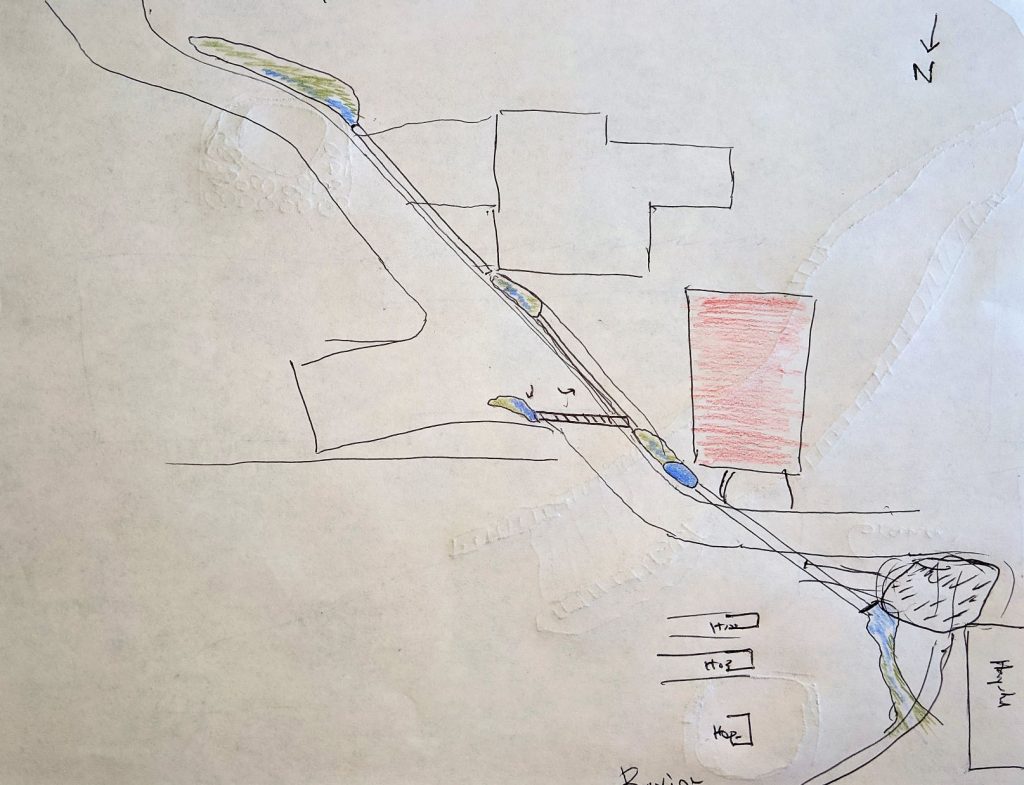
Rain gardens are a particular favorite of mine. They are a sunken garden designed to collect water and then naturally infiltrate it into the ground. They tend to be planted with a variety of hardy, native, and pollinator friendly plants. Water control + native plants, what’s not to like? This PDF from the State of Washington is a particularly good reference on rain gardens.
What I’ve built so far is a pond (top left of diagram) and driveway rain garden (left middle). And to my great surprise, the rain garden has caught quite a lot of water (runoff from 1 inch rainstorms) and absorbed it all. This rain garden was placed where the runoff down the driveway was observed to naturally come.
Construction is simple. First, you dig out the ground a bit. I made my garden a nice, crescent-moon shape. Luckily we have an excavator, because the soil here, extensively mixed with gravel, requires a pick mattock to dig otherwise. Final shaping was done with a McLeod and pick mattock.
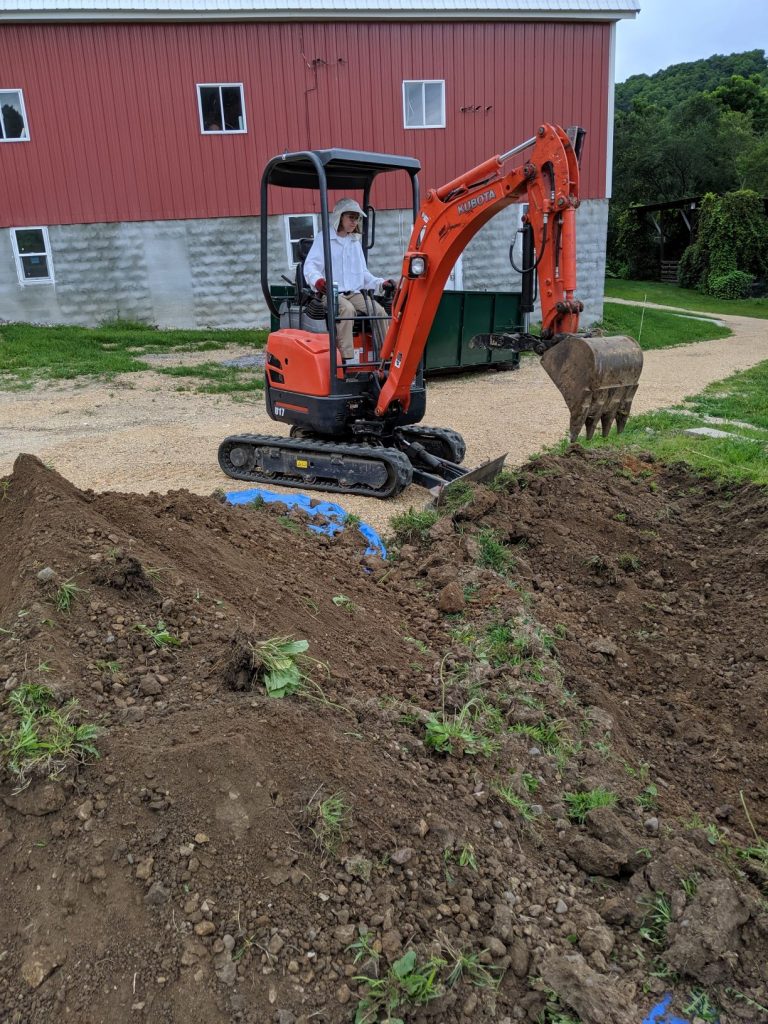
Next you put down landscaping cloth. Pretty simple. It suppresses weeds and controls erosion. It should be used in every garden!
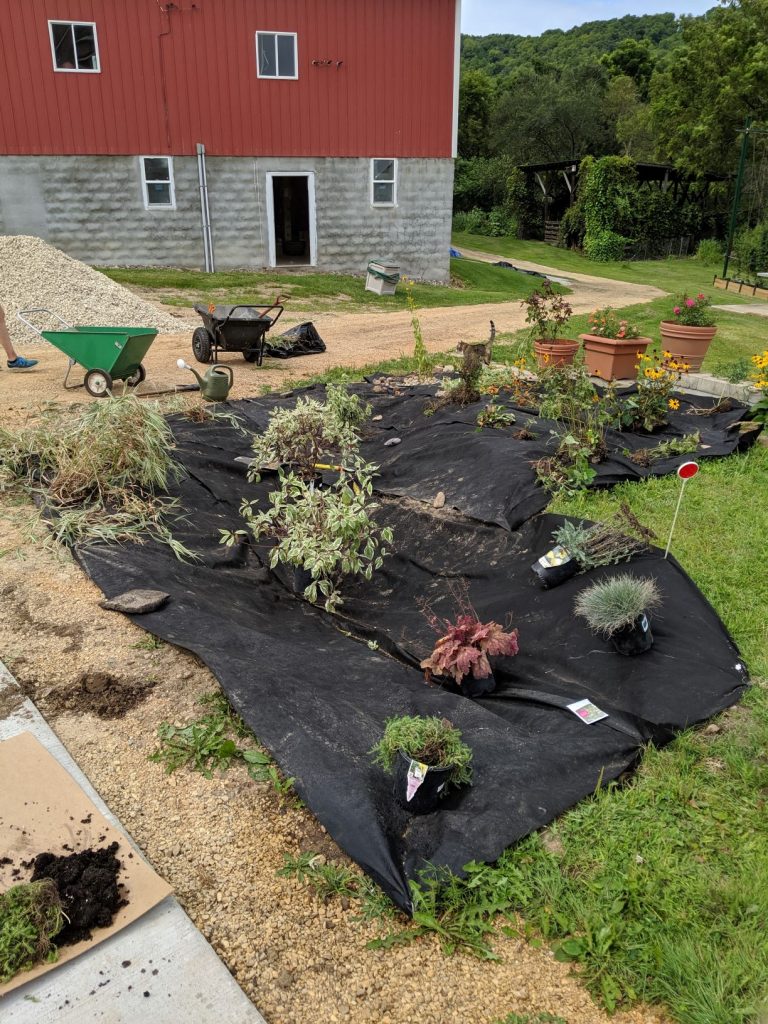
The nursery in Lake City is only open for a few months in summer, and I got in there for their closing, 50% sale, which made for some nice acquisitions. Quite the mix of plants, mostly looking for plants able to take dry-wet fluctuations. I also borrowed divisions of plants from other parts of the garden to fill things out.
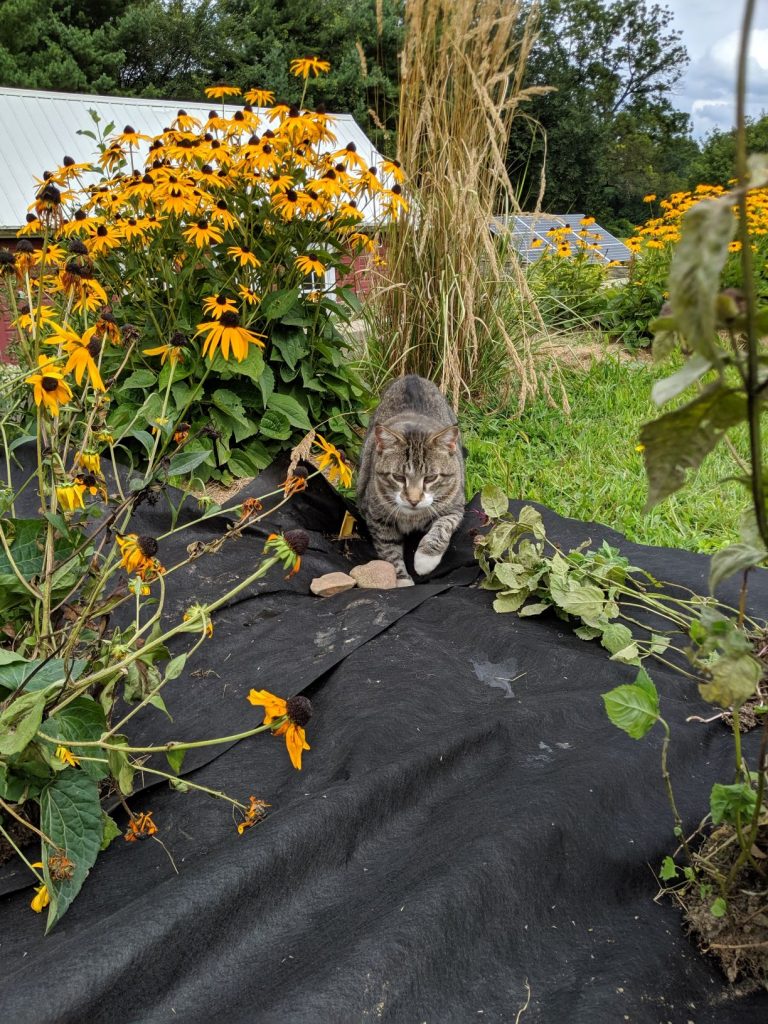
And I’ve had two good rainstorms to examine the garden, both in its dirt form uncovered, and then planted. In both cases, it caught quite a bit of water. I imagine it will drain even more quickly once the plants, particularly the dogwoods, develop deep root systems.
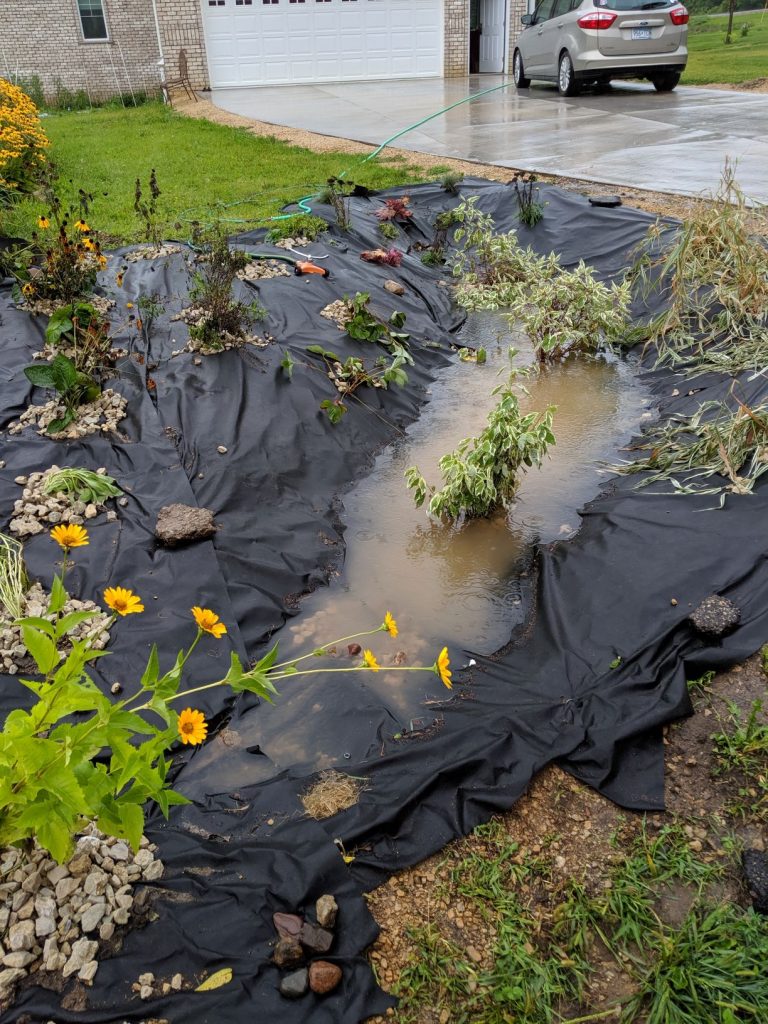
The last step was reducing the harshness of the black landscaping cloth by a thick layer of gravel on the driveway side, and by loose flat stones on the yard side.
